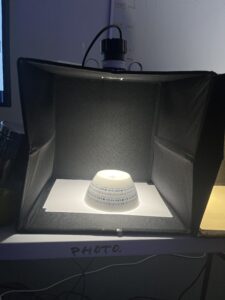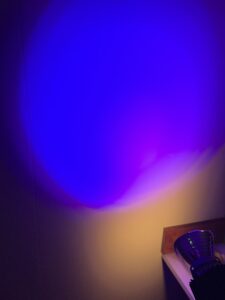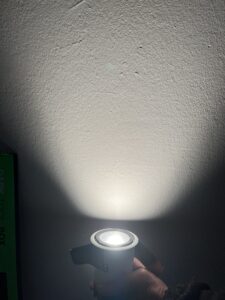Last Friday, we had a lighting professional come to class and present us a plethora of lighting methods, all serving different purposes. I found the LED light interesting, as I did not know that its initial state, before the phosphorus is added, is a violet shade. We took light measurements in class and lots of photos, as we were trying out various temperatures and intensities. One combination of lights in particular reminded me of James Turrell’s work. His work has always fascinated me, as I find it truly outstanding how his work can evoke so much emotion only through the use of light and colour. This exercise made me understand how vital light is for any interior and how depending on how much or how little amount or the tone of the light , the space can obtain an entirely different meaning.
Thus, in this blog post I would like to get into depth about James Turrel’s work and the genius behind it, as, with solely the use of light , he is able to convey such strong emotions and receive such strong reactions from the observers and art critiques. A pioneering artist in the Light and Space movement, is renowned for his transformative exploration of light as a medium in his artworks. Turrell’s installations, often described as perceptual experiences, manipulate light to elicit profound emotional and spatial responses. Turrell meticulously orchestrates natural and artificial light, using LEDs or neon tubes to create immersive environments that challenge conventional notions of space and vision. The artist’s work is not merely about illuminating spaces; it’s about shaping the way viewers perceive and engage with light itself. Turrell’s installations invite contemplation, encouraging viewers to appreciate light not just as an aesthetic element but as a dynamic force capable of transcending the visual and evoking a visceral, almost spiritual, response. In Turrell’s hands, light becomes a sculptural material, almost tangible, a tool for a deeper connection between art, observer, and the surrounding environment.
James Turrell showcases a variety of luminaires and lighting technologies in his artworks to achieve specific effects and manipulate the perception of light. Some of the most prevalent types of luminaires and lighting elements used in Turrell’s installations include: LEDs, neon lights, fluorescent lights, fiber optics and, at times, natural light.
His work is truly revolutionary, as he is a pioneer in contemporary art, in the light and space domain specifically, as he broadened the possibilities for artistic engagement with light through his innovative ideas. He is and will continue to be a visionary in his domain and an example for future artists.
Sources: Fig1: James Turrell artwork- news.artnet.com
Photos of light exercise- taken by me (Daria)
Govan, M. et al. (2013) James Turrell : a retrospective / Michael Govan and Christine Y. Kim ; with essays by Alison de Lima Greene, E.C. Krupp ; featuring photography by Florian Holzherr. Los Angeles, Calif: Los Angeles County Museum of Art.
Peifer, D. (2013) Lighting lessons from an artist: James Turrell’s Guggenheim exhibition plays with perceptions. Vol. 54. The Nielsen Company.
Harris, J. (2001) James Turrell: Infinite Light. Graphis 58 (335) p.102-.

















